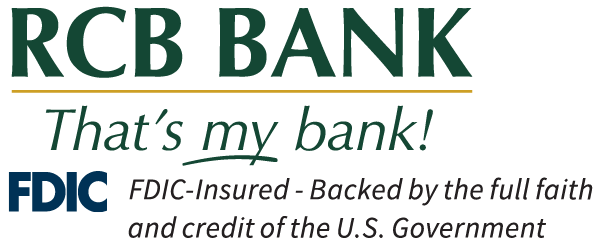These are deposits held in either payable-on-death (POD) accounts or living trust accounts.
Payable-on-death (POD) accounts—also known as testamentary or Totten Trust accounts—are the most common form of revocable trust deposits. These informal revocable trusts are created when the account owner signs an agreement—usually part of the bank’s signature card—stating that the deposits will be payable to one or more named beneficiaries upon the owner’s death.
Living trusts—or family trusts—are formal revocable trusts created for estate planning purposes. The owner of a living trust controls the deposits in the trust during his or her lifetime.
New Rules for Trust Account Owners Adopted September 26, 2008
The FDIC adopted an interim rule on September 26, 2008 to simplify its deposit insurance rules for revocable trust account owners. This interim rule eliminates the concept of qualifying beneficiaries. Coverage is now based on the number of beneficiaries specifically named in the documents used to establish the trust account(s). A “beneficiary” may be any natural person, as well as a charitable organization or other non-profit entity recognized as such under the Internal Revenue Code.
Trusts with up to Five Beneficiaries
Under the new rules, a trust account owner with no more than five different beneficiaries is separately insured up to $250,000 per beneficiary.
Example 1: Bill has a $1,000,000 trust account. His living trust names four beneficiaries, Susie, Johnny, Billy, and Jodie. Bill also has a $250,000 individual account styled in his name only, and a $250,000 POD account with his wife Sue as beneficiary. Sue has a $250,000 individual account styled in her name only, and a $250,000 POD account with Bill as beneficiary.
| Account Title |
Account Balance |
Amount Insured |
Amount Uninsured |
| Bill – Individual Account |
$250,000 |
$250,000 |
$0 |
| Bill – POD to Sue |
$250,000 |
$250,000 |
$0 |
| Sue – Individual Account |
$250,000 |
$250,000 |
$0 |
| Sue – POD to Bill |
$250,000 |
$250,000 |
$0 |
| Bill’s Living Trust Account |
$1,000,000 |
$1,000,000 |
$0 |
| Total |
$2,000,000 |
$2,000,000 |
$0 |
Considering the ownership and beneficiaries, Bill and Sue’s accounts are fully insured. Bill has $1,500,000 of insurance coverage ($250,000 for his individual account, and $1,250,000 for his beneficiaries—his wife on the POD account and the four different beneficiaries named in his living trust). Sue has $500,000 of insurance coverage ($250,000 for her individual account, and $250,000 for her beneficiaries – her husband on the POD account).
When calculating coverage for revocable trust accounts, be careful to avoid these common mistakes:
- Do not assume that coverage is calculated as $250,000 times the number of people -owner(s) and beneficiary(ies)—named on a trust account. Coverage is provided for the interest of each qualifying beneficiary named by each owner. Additional coverage is not provided to the owners for naming themselves as owners. For example, a father’s POD account naming two sons as beneficiaries is insured to $500,000 only—$250,000 for the interest of each beneficiary.
- Do not assume that the FDIC insures POD and living trust accounts separately. In applying the $250,000 per-beneficiary insurance limit, the FDIC combines an owner’s POD accounts with the living trust accounts that name the same beneficiaries at the same bank.
Example 2: Jane has a $500,000 trust account. Her living trust names Bob (her nephew) and Sally (her friend) as beneficiaries. Jane also has a $500,000 POD account at the same bank that name the same individuals (i.e., Bob and Sally) as beneficiaries.
| Account Title |
Account Balance |
Amount Insured |
Amount Uninsured |
|
Jane – POD Bob & Sally
|
$500,000 |
$500,000 |
$0 |
|
Jane Living Trust
|
$500,000 |
$0 |
$500,000 |
| Total |
$1,000,000 |
$500,000 |
$500,000 |
Since Jane’s accounts name the same beneficiaries, her funds are not fully insured. The maximum coverage available to Jane given the ownership and beneficiaries of her accounts at the bank would be $500,000 ($250,000 for each different beneficiary). The naming of the same beneficiary in more than one revocable trust account, whether it be a payable-on-death (POD) or living trust, does not increase the total coverage amount.
A simple formula for determining coverage of your trust accounts with five or less beneficiaries at an FDIC-insured financial institution is:
Number of Grantor(s)/Owner(s) times $250,000 times Number of Beneficiaries
Trusts with More Than Five Beneficiaries
Under the new rules, trust accounts with more than five beneficiaries are insured up to the greater of:
- $1,250,000, or
- the aggregate amount of the ownership interest for each different beneficiary named in the trusts subject to the $250,000 limit per beneficiary.
Example: Fred has a living trust account with a balance of $1,100,000. Under the terms of the trust, Fred’s three children are each entitled to $50,000, his friend, John, is entitled to $5,000, and a designated charity is entitled to $70,000. The trust provides that the remainder of the trust assets belongs to Fred’s spouse.
|
Beneficial Interest |
Beneficiary Limits |
Excess Beneficial Interest |
| Living Trust Account |
|
|
|
| Three Children |
$150,000 |
$150,000 |
$0 |
| Friend (John) |
$5,000 |
$5,000 |
$0 |
| Charity |
$70,000 |
$70,000 |
$0 |
| Spouse |
$875,000 |
$250,000 |
$625,000 |
| Aggregate Beneficial Interest (subject to limits) |
|
$475,000 |
|
|
Account Balance |
Amount Insured |
Amount Uninsured |
| Total |
$1,100,000 |
$1,100,000 |
$0 |
Fred’s living trust account is fully insured. The maximum coverage afforded to him would be $1,250,000 (the greater of $1,250,000 or the aggregate beneficial interest of $475,000).
For help determining the insurance coverage for your living trust accounts, please visit your nearest RCB Bank office or contact the FDIC at 877.275.3342 for more information.
